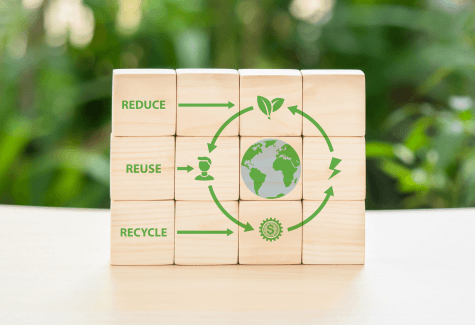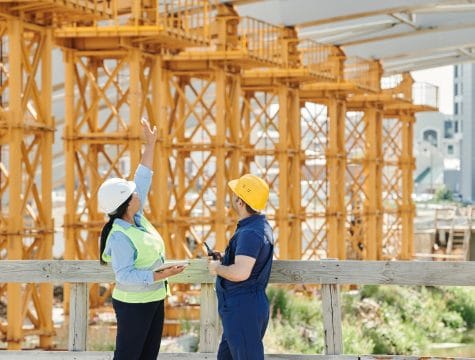Technologies for the construction sector to transition to the circular economy
The construction industry has long been known for its unsustainable practices, with buildings often being designed and constructed with little regard for their environmental impact. However, as concerns about climate change and resource depletion continue to grow, there is a growing push for construction to transition to the circular economy – an economic model that promotes the reuse and recycling of resources. Fortunately, modern technologies are making it easier than ever for the construction industry to make this transition.
With this set of information we want to uncover the most innovative one, and we will start with 3D Printing.
Three-dimensional printing is revolutionizing the construction industry by making it more resource efficient and sustainable. In the last years, it has been gaining attention and making significant advancements, but it has not yet moved fully into mainstream use. With this review, we want to dive deeper into the topic and see what are the potentials for the technology to contribute to the circular construction transformation.
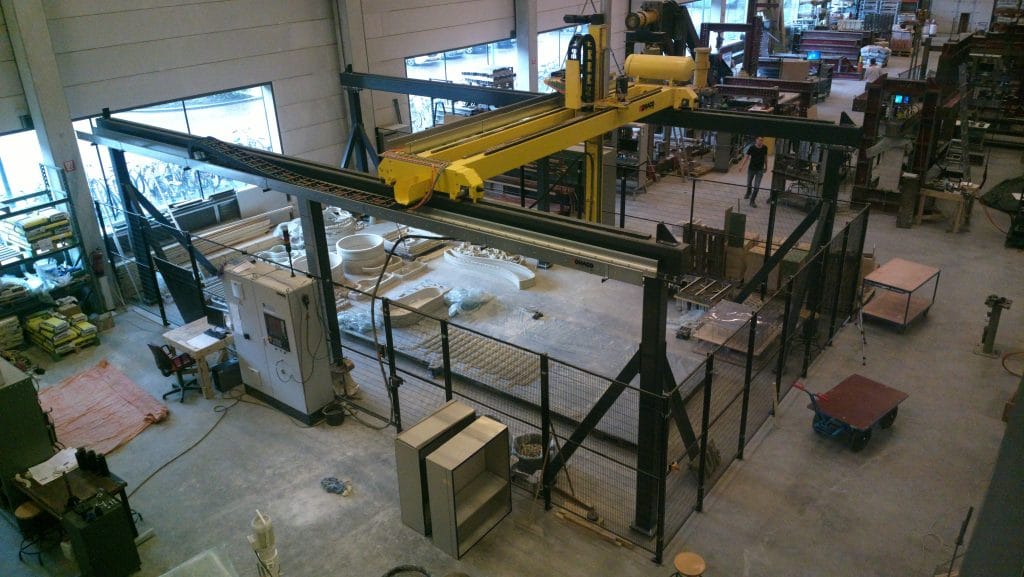
By Misanthropic One – https://www.flickr.com/photos/22902505@N05/26587585494/, CC BY 2.0, https://commons.wikimedia.org/w/index.php?curid=93480946
What are the potential applications of 3D printing for circular construction?
Areas, where innovators look at, are the use of this technology to bring to life complex shapes that would be difficult or impossible to achieve with traditional methods. The expectation is that this can help to reduce waste by using less material and producing less waste during the construction process. It could be applied to concrete formworks, but also for the facade systems that would be tailored to each project. In this case, the approach is that tailored solutions would have exact specifications of the buildings and would substitute the prefabricated panels that might not fit. Of course, it also becomes a boost for creativity and design of new building forms.
Breaking it down further, there is also a potential for 3D-printed brackets and connectors that can be used to join building components together in a more precise and efficient manner, reducing waste by minimizing the need for additional materials or adjustments during the construction process. An example that may fit here is the Chicon House in Austin built in 2018, designed to function with near-zero waste. The company ICON was using its Vulcan construction system that can print structures up to 3,000 square feet. The target however is not only to enable waste free construction but to be a proof-of-concept for sustainable home building with safer and faster construction time as well. The printer, called the Vulcan, is designed to work under the constraints that are common in places like Haiti and rural El Salvador where power can be unpredictable, potable water is not a guarantee and technical assistance is sparse.
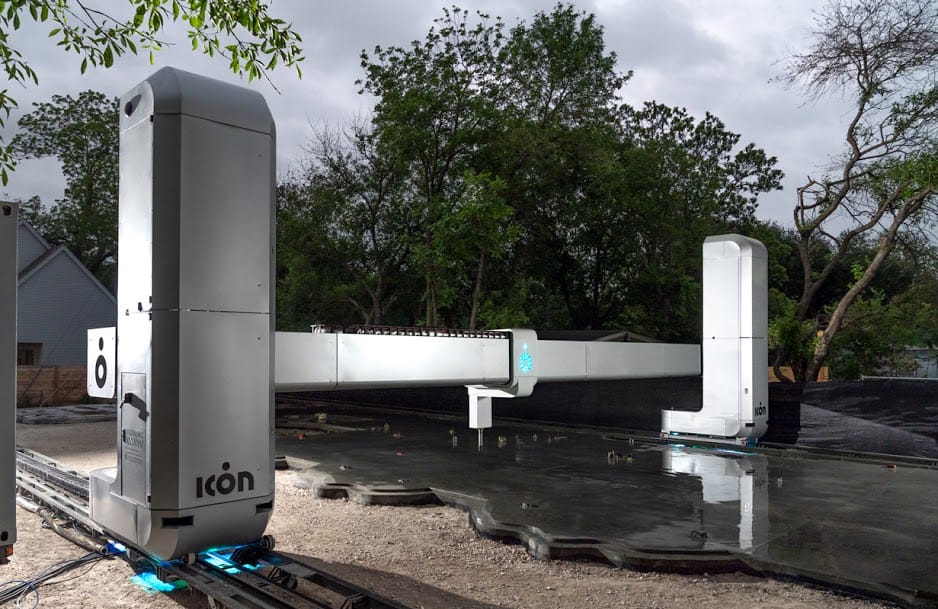
By ICON Team – https://3dprintingindustry.com/news/icon-unveils-plans-for-improved-next-generation-vulcan-3d-printer-190706/, CC BY-SA 4.0, https://commons.wikimedia.org/w/index.php?curid=126652246
In Germany however the largest 3D print building is about to be constructed in Heidelberg, with COBOD’s BOD2 printer. One of the leading partners in the project is PERI 3D construction. They constructed Germany´s first 3D apartment in Beckum, North Rhine-Westphalia together with Hous3Druck, the German construction company specializes in 3D printing of buildings. The concrete formwork is unique with a triple skin cavity wall that is filled with an insulating material. In addition, Eindhoven University of Technology´ large-scale gantry printer enables the school´s research facility to experiment on printable structures and materials, necessary to advance the 3D printing in the construction sector.
The innovations do not just stop there, the industry is experimenting on 3D Printing with sustainable materials (or less carbon heavy materials), e.g. clay (clay printing). Such buildings could be very cheap, well-insulated, stable, weatherproof, climate-adaptable, customizable, constructed in short durations, and the skills are easy to learn for manual labor. One of the first prototypes, TECLA, was finished in 2021 in Italy.
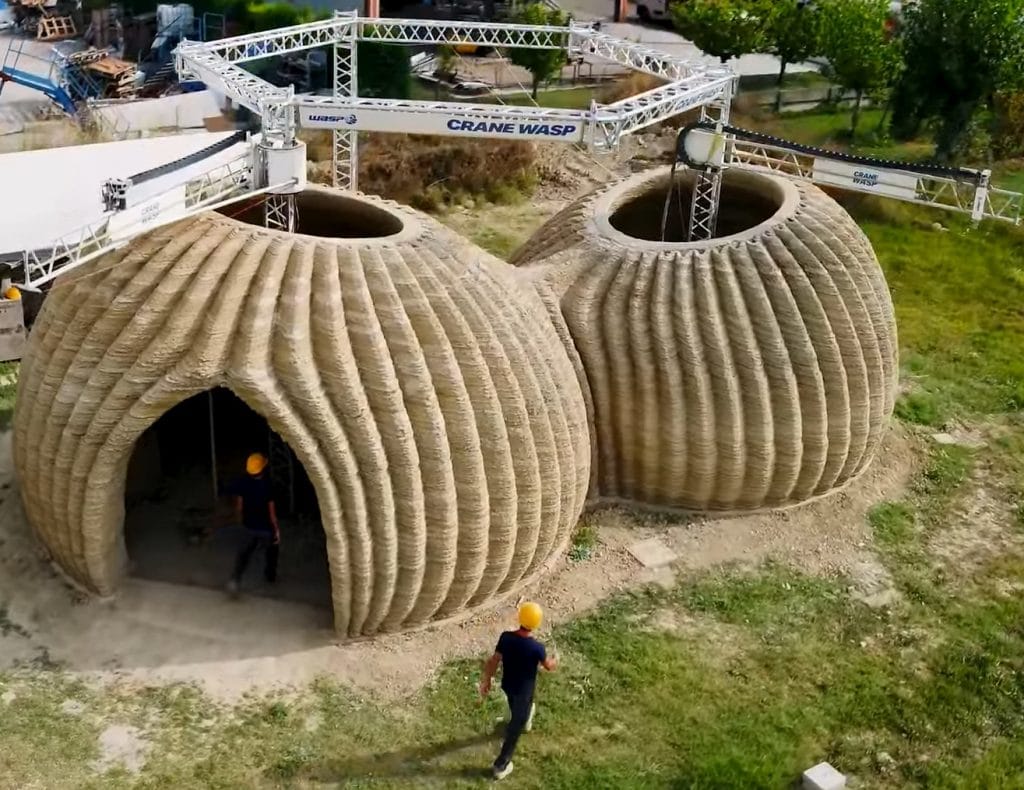
What are the current challenges for the technology in circular construction?
Cost
The cost of 3D printing equipment and materials, as well as the associated infrastructure, can be relatively high compared to traditional construction methods. Of course it changes from project to project, however the main cost driver becomes equipment (and its maintenance) as well as material costs (mainly concrete, plastics, and metals), which vary. However due to the high automatisation, labor costs might be reduced. For the small construction companies it may be a significant factor to use such technology.
Building Codes and Regulations
The development of building codes and regulations specific to 3D printed construction is still an ongoing process. Authorities need to ensure that structures built using 3D printing technology meet safety, durability, and quality standards. Establishing these guidelines takes time and collaboration between industry stakeholders and regulatory bodies.
Material Development and energy use
The development of suitable construction materials for 3D printing is still an active area of research and development. Finding materials that meet the required strength, durability, and sustainability criteria is crucial for successful implementation on a larger scale. This factor is especially important for the topic of circular economy in construction. Furthermore, there are also concerns about the environmental impact of 3D printing technology. The energy and resource requirements of the concept must be carefully considered in regards to the circular economy, where the goal is to minimize the environmental impact of all stages of the production process. Currently the experimentation with renewable material solutions and their end of life in the construction sector is ongoing.
As we wrap this up, it is important to note that a circular economy in the construction sector is essential for reducing the industry’s impact on the environment. 3D printing might be one of the paths to go. Like any other project, assessment of the life cycle of construction projects using 3D printing is essential. The design, materials used and maintenance over the life projects among other factors, determines the sustainability of the projects.



